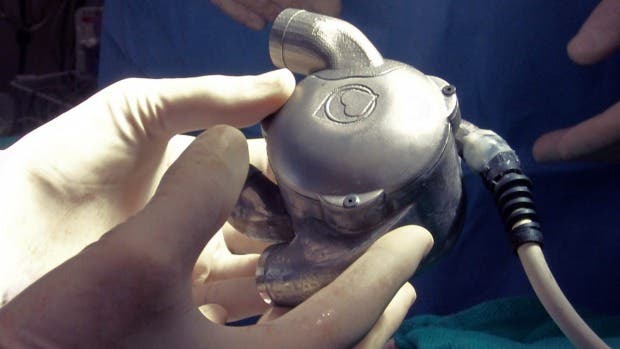Scientists in Australia have developed a groundbreaking bionic heart that works without having a pulse. The device, which was successfully tested on a sheep, is set to start clinical trials within three years.

The device was developed by Brisbane engineer Dr Daniel Timms, who instigated the project in 2001 while studying at the Queensland University of Technology. The mechanism is, at its core, fairly simple; it has a spinning disc with small blades on each side that pump blood around the body and lungs, without actually beating. In other words, the user of this bionic heart wouldn’t have a pulse. The small bladed disks, which spin at 2000 revolutions per minute, represent a significant change in departure from traditional pulse-based designs.
Timms explained that the device, called BiVACOR, could last ten years longer than previous designs due to the lack of wear and tear on the components.
“There were other devices that were quite large, and they also would break quite easily,” Dr Timms says in a video explaining the concept. And the reason they would break is they would have a sac, so if you’re beating them billions of times per year, they’re going to break.”
Another key innovation is the fact that the components are kept in place through magnetic force, and they don’t directly touch each other, something which reduces wear and tear even more.
“It means there’s no wear and that’s the key of the device in that it can actually last for up to 10 years or longer without wearing out,” he said. And that’s a paradigm shift actually from these earlier pulse-style devices that couldn’t last for more than two years.”
In January, a team tested the device on a healthy sheep, and everything went as expected. World-renowned cardiac surgeon Dr Billy Cohn was part of the team of 25 specialists who implanted the artificial heart; he said:
“Sheep represent the chest size of women and children,” he said. “No total artificial hearts has been small enough to fit – this device did and worked perfectly.”
For the entire design team, it was a huge moment of relief and excitement – it showed that the worked they outputted in a decade wasn’t in vain.
Professor John Fraser, from the Prince Charles Hospital at Chermside on Brisbane’s northside, said the sheep was standing and eating six hours after surgery.
“This was a live and healthy sheep, walking and eating, without any pulse,” he said. “The combined surgical team from Texas, Brisbane, Sydney and Melbourne totally removed the heart. There was no native heart at all – instead there was a titanium disc spinning keeping this sheep happy and healthy.”
The device might actually reach humans in three years, if the team are successful in the crowdfunding campaign they’ve started. The bionic heart could save the lives of millions every year.


